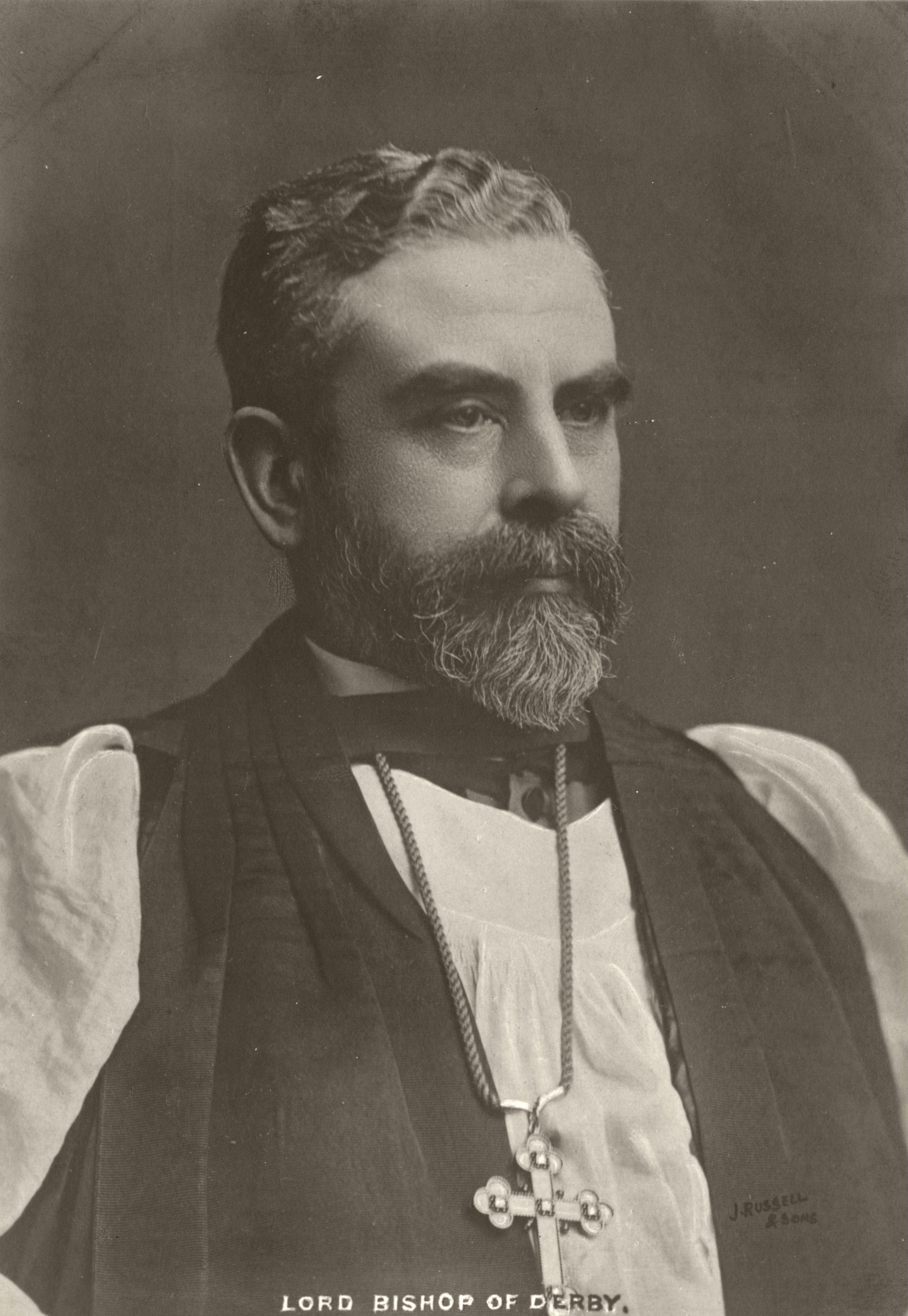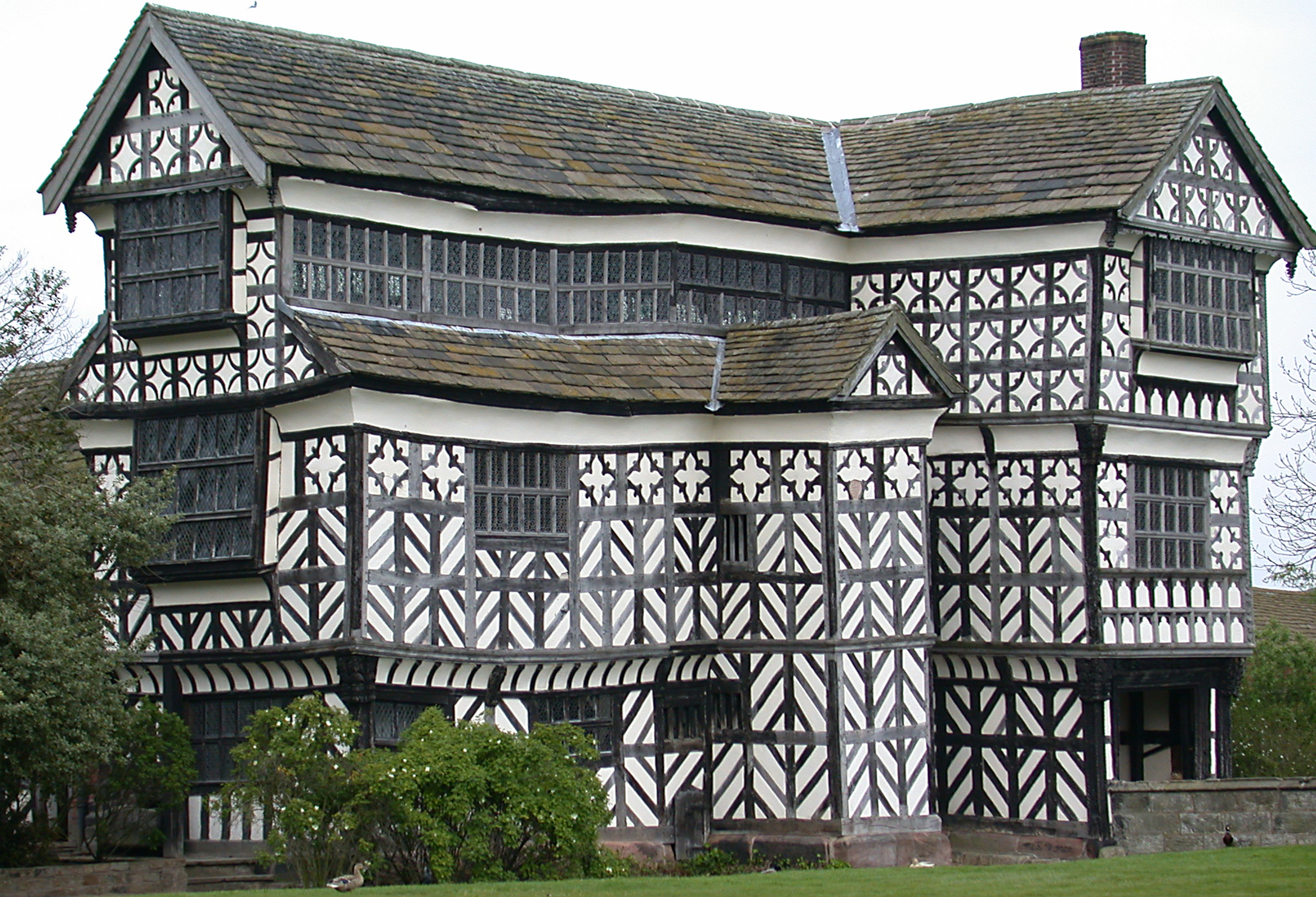|
Charles Abraham (bishop Of Derby)
Charles Thomas Abraham (1857 – 27 January 1945) was a British Anglican minister who served as the bishop of Derby from 1909 until 1927. Life Abraham was born in 1857. He was the son of Charles and Caroline Abraham. He was educated at Keble College, Oxford. Ordained in 1881, he began his career with a curacy at St Mary's Church, Shrewsbury and was subsequently Vicar of All Saints, Shrewsbury and Christ Church, Lichfield before succeeding Edward Were as the bishop of Derby (suffragan). His father, Charles, and his son, Philip, were also bishops; another son, Geoffrey, was killed in action during the First World War. Another son, Jasper, was notorious for killing a Kenyan servant by flogging in 1923; the light sentence he received provoked a change in the legal system of Kenya Colony. After Bishop Abraham retired, a cousin bequeathed Little Moreton Hall in Congleton Congleton is a town and civil parish in the unitary authority of Cheshire East in Cheshire, Engl ... [...More Info...] [...Related Items...] OR: [Wikipedia] [Google] [Baidu] |
Church Of England
The Church of England (C of E) is the established Christian church in England and the mother church of the international Anglican Communion. It traces its history to the Christian church recorded as existing in the Roman province of Britain by the 3rd century and to the 6th-century Gregorian mission to Kent led by Augustine of Canterbury. The English church renounced papal authority in 1534 when Henry VIII failed to secure a papal annulment of his marriage to Catherine of Aragon. The English Reformation accelerated under Edward VI's regents, before a brief restoration of papal authority under Queen Mary I and King Philip. The Act of Supremacy 1558 renewed the breach, and the Elizabethan Settlement charted a course enabling the English church to describe itself as both Reformed and Catholic. In the earlier phase of the English Reformation there were both Roman Catholic martyrs and radical Protestant martyrs. The later phases saw the Penal Laws punish Ro ... [...More Info...] [...Related Items...] OR: [Wikipedia] [Google] [Baidu] |
Edward Were
Edward Ash Were (14 November 1846–8 April 1915) was an Anglican suffragan bishop in the latter part of the 19th century and the first decades of the 20th. He was educated at Rugby School and New College, Oxford. After graduation, he was an Assistant Master at Winchester College for ten years before becoming Vicar of North Bradley in Wiltshire. After a spell as Chaplain to George Ridding, Bishop of Southwell he became the first, and long serving, Bishop of Derby (then a suffragan bishop in the Diocese of Southwell). In 1909 in a sideways move he was translated to the Diocese of Lichfield to be their suffragan Bishop of Stafford. His son, who perished in the First World War, was also a distinguished clergyman.The Times ''The Times'' is a British daily national newspaper based in London. It began in 1785 under the title ''The Daily Universal Register'', adopting its current name on 1 January 1788. ''The Times'' and its sister paper ''The Sunday Times'' (fou ..., Satu ... [...More Info...] [...Related Items...] OR: [Wikipedia] [Google] [Baidu] |
Alumni Of Keble College, Oxford
Alumni (singular: alumnus (masculine) or alumna (feminine)) are former students of a school, college, or university who have either attended or graduated in some fashion from the institution. The feminine plural alumnae is sometimes used for groups of women. The word is Latin and means "one who is being (or has been) nourished". The term is not synonymous with "graduate"; one can be an alumnus without graduating ( Burt Reynolds, alumnus but not graduate of Florida State, is an example). The term is sometimes used to refer to a former employee or member of an organization, contributor, or inmate. Etymology The Latin noun ''alumnus'' means "foster son" or "pupil". It is derived from PIE ''*h₂el-'' (grow, nourish), and it is a variant of the Latin verb ''alere'' "to nourish".Merriam-Webster: alumnus .. Separate, but from the ... [...More Info...] [...Related Items...] OR: [Wikipedia] [Google] [Baidu] |
1857 Births
Events January–March * January 1 – The biggest Estonian newspaper, ''Postimees'', is established by Johann Voldemar Jannsen. * January 7 – The partly French-owned London General Omnibus Company begins operating. * January 9 – The 7.9 Fort Tejon earthquake shakes Central and Southern California, with a maximum Mercalli intensity of IX (''Violent''). * January 24 – The University of Calcutta is established in Calcutta, as the first multidisciplinary modern university in South Asia. The University of Bombay is also established in Bombay, British India, this year. * February 3 – The National Deaf Mute College (later renamed Gallaudet University) is established in Washington, D.C., becoming the first school for the advanced education of the deaf. * February 5 – The Federal Constitution of the United Mexican States is promulgated. * March – The Austrian garrison leaves Bucharest. * March 3 ** France and the United Kingdom for ... [...More Info...] [...Related Items...] OR: [Wikipedia] [Google] [Baidu] |
Diocese Of Derby
The Diocese of Derby is a Church of England diocese in the Province of Canterbury, roughly covering the same area as the County of Derbyshire. Its diocesan bishop is the Bishop of Derby whose seat (cathedra) is at Derby Cathedral. The diocesan bishop is assisted by one suffragan bishop, the Bishop of Repton. Bishops The Bishop of Derby is Libby Lane. The diocesan Bishop is assisted by a suffragan Bishop of Repton ( Malcolm Macnaughton). The provincial episcopal visitor (for traditional Anglo-Catholic parishes in this diocese who have petitioned for alternative episcopal oversight) is the Bishop suffragan of Ebbsfleet. Derby is one of the few dioceses not to license the provincial episcopal visitor as an honorary assistant bishop. There is one former bishop licensed as honorary assistant bishops in the diocese: *2008–present: retired former Bishop of Sheffield Jack Nicholls lives in Chapel-en-le-Frith and is also licensed in neighbouring Diocese of Manchester. Roger Jupp ... [...More Info...] [...Related Items...] OR: [Wikipedia] [Google] [Baidu] |
Congleton
Congleton is a town and civil parish in the unitary authority of Cheshire East in Cheshire, England. The town is by the River Dane, south of Manchester and north of Stoke on Trent. At the 2011 Census, it had a population of 26,482. Toponymy The town's name is of unknown origin. The first recorded reference to it was in 1282, when it was spelt ''Congelton''. The element ''Congle'' might relate to the old Norse ''kang'' meaning a bend, followed by the Old English element ''tun'' meaning settlement. History The first settlements in the Congleton area were Neolithic. Stone Age and Bronze Age artefacts have been found in the town. Congleton was once thought to have been a Roman settlement, although there is no archaeological or documentary evidence to support this. Congleton became a market town after Vikings destroyed nearby Davenport. Godwin, Earl of Wessex held the town in the Saxon period. The town is mentioned in the Domesday Book, where it is listed as ''Cogeltone: ... [...More Info...] [...Related Items...] OR: [Wikipedia] [Google] [Baidu] |
Little Moreton Hall
Little Moreton Hall, also known as Old Moreton Hall, is a moated half-timbered manor house southwest of Congleton in Cheshire, England. The earliest parts of the house were built for the prosperous Cheshire landowner William Moreton in about 1504–08, and the remainder was constructed in stages by successive generations of the family until about 1610. The building is highly irregular, with three asymmetrical ranges forming a small, rectangular cobbled courtyard. A National Trust guidebook describes Little Moreton Hall as being "lifted straight from a fairy story, a gingerbread house". The house's top-heavy appearance, "like a stranded Noah's Ark", is due to the Long Gallery that runs the length of the south range's upper floor. The house remained in the possession of the Moreton family for almost 450 years, until ownership was transferred to the National Trust in 1938. Little Moreton Hall and its sandstone bridge across the moat are recorded in the National Heritage List for ... [...More Info...] [...Related Items...] OR: [Wikipedia] [Google] [Baidu] |
Kenya Colony
The Colony and Protectorate of Kenya, commonly known as British Kenya or British East Africa, was part of the British Empire in Africa. It was established when the former East Africa Protectorate was transformed into a British Crown colony in 1920. Technically, the "Colony of Kenya" referred to the interior lands, while a 16 km (10 mi) coastal strip, nominally on lease from the Sultan of Zanzibar, was the "Protectorate of Kenya", but the two were controlled as a single administrative unit. The colony came to an end in 1963 when an ethnic Kenyan majority government was elected for the first time and eventually declared independence as the Republic of Kenya. History The Colony and Protectorate of Kenya was established on 23 July 1920 when the territories of the former East Africa Protectorate (except those parts of that Protectorate over which His Majesty the Sultan of Zanzibar had sovereignty) were annexed by the UK. The Kenya Protectorate was established on 29 Novembe ... [...More Info...] [...Related Items...] OR: [Wikipedia] [Google] [Baidu] |
Jasper Abraham Murder Case
In June 1923, British settler Jasper Abraham was tried for the murder of African labourer Kitosh in the Kenya Colony. Kitosh had died after a Flagellation, flogging administered by Abraham and his employees at a farm near the town of Molo, Kenya. The jury, Racial discrimination in jury selection, which was all-white and composed of Abraham's acquaintances, found him guilty of a lesser charge of "grievous hurt" and he was sentenced to two years' imprisonment. The sentence, widely regarded as overly lenient, brought condemnation from the Government of the United Kingdom, British government's Colonial Office regarding the way the case had been handled by the colony's judicial system and the continued use of the Indian Penal Code (IPC) in Kenya, which differed significantly from English law in its treatment of homicide. A succession of British secretaries of state attempted to impose legal reform on the colony, though these were resisted by Chief Justice of Kenya Jacob William Bart ... [...More Info...] [...Related Items...] OR: [Wikipedia] [Google] [Baidu] |





.jpg)
_in_1902.png)
